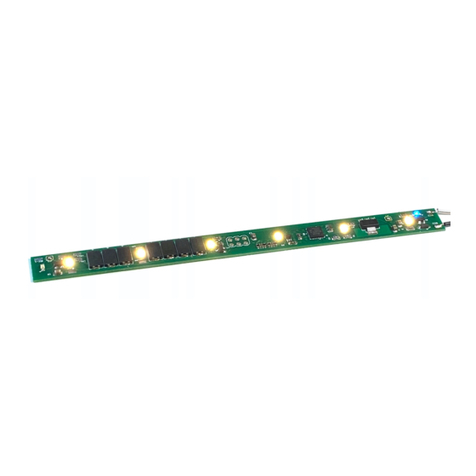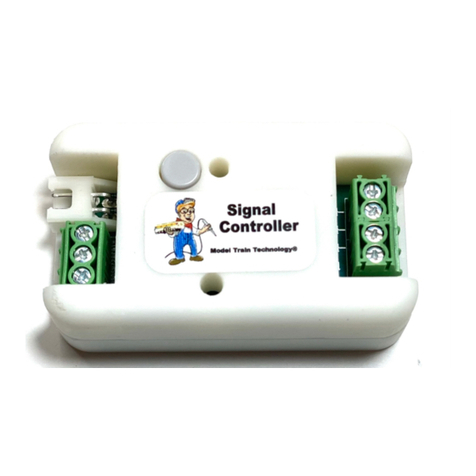
April 2021
holes for screws or glue and a minimally sized base that matches the
footprint of the top box. The PRECISION DETECTOR™ slides into the
base bracket and then the box top slides over the top of that.
After we had our share of frustration with IR (infrared) detectors that
are susceptible to ambient light, particularly florescent, some LEDs and
mercury bulbs found at large train shows, we searched for a smaller,
faster, more precise technology that would also be impervious to poor
light conditions. The sensor we chose, along with our software, will
detect the location of a train car anywhere within a 150mm (5.5”) range
with 1mm precision without regard to lighting conditions.
This means you can put the sensor near the track, or you can hide it
away in a nearby building or in the side of a hill. You can also use the
PRECISION DETECTOR™ to alert when a train has reached the endpoint
of track inside a hidden yard. In other words, aimed down the track
from the endpoint, not across it. In this example the detector will only
“see” the train on the track its’ aim down – and not the adjacent track.
Summary of Features:
• Long, precise sensor range (1mm up to 150mm)
• No more adjusting for varying light conditions.
• Adjustable detect ranges (N & HO and O gauge)
• Detect one parallel track and ignore the others
• Adjustable time-out (0-60 seconds)
• Reversable Signal output (INVERT)
• Two mounting options plus Electrical box integrated design





























